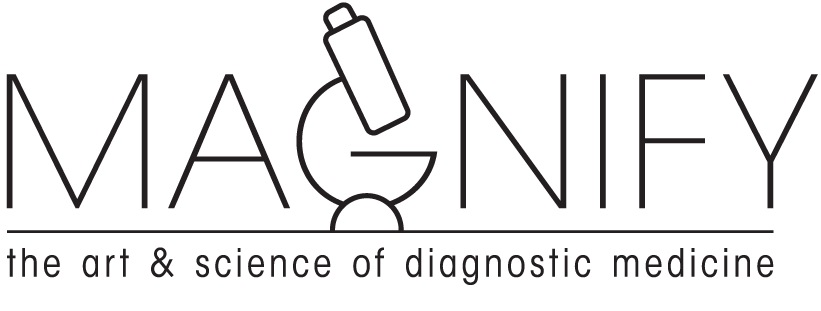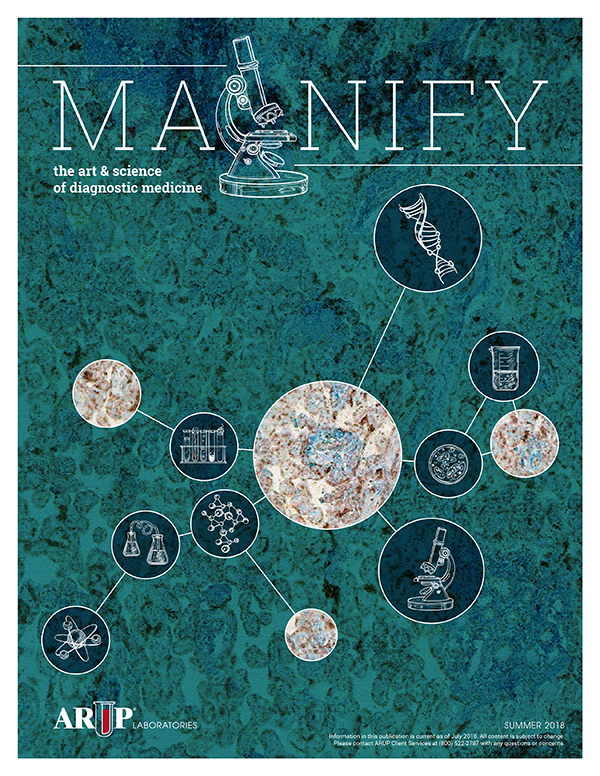ARUP Fellows and Residents Touch Patients’ Lives Around the World
Spread throughout the country and around the world are thousands of laboratory medicine experts who trained as fellows or residents at ARUP Laboratories through the University of Utah’s Department of Pathology.
“Many of our faculty members came through as fellows and some went on to important leadership positions here, like Sherrie Perkins, MD, PhD [ARUP’s CEO from 2017 until her retirement in July 2021],” said Harry Hill, MD.
Hill trained more than 20 fellows in immunology and microbiology before his retirement in October 2021 as ARUP medical director of Cellular and Innate Immunology. “As ARUP grew and gained a national and international reputation, our fellowships became more competitive,” he said. “We have become known as a place where fellows do really good research.”
The U Department of Pathology sponsors 14 clinical and anatomic pathology fellowship programs, and 13 of these rely on ARUP as a training ground. Two to four fellows are accepted into each of these programs each year.
The largest and perhaps best known ARUP fellowship program is in hematopathology and accepts three fellows a year. Started in the 1980s, this program was first led by Carl Kjeldsberg, MD, an ARUP founder.
“Our program is unique because it is not just for MDs, it is for PhDs as well,” said Kristin Karner, MD, who directs the program and also serves as medical director of Hematopathology and Molecular Oncology at ARUP. “People are drawn to it because we take a very holistic approach. We are not just looking at glass slides, but also viewing clinical notes, medical charts, radiology images, and lab results. People enjoy it because it is like putting a very complicated puzzle together.”
One of ARUP’s first fellowship programs to earn accreditation was the clinical chemistry program in the early 1980s. Elizabeth Frank, PhD, DABCC, now medical director of Analytic Biochemistry, Calculi and Manual Chemistry and co-medical director of Mass Spectrometry, recalls arriving at ARUP in 1998 as a fellow when there were only two other fellowship programs. “At the time, ARUP was just a small outpost in Utah,” said Frank, who went on to direct the program for 13 years.
ARUP’s clinical microbiology fellowship program is one of the oldest in the country. The program receives about 50 applicants each year, and only one applicant is accepted into the two-year program, said Marc Couturier, PhD, who directs the program, which is primarily aimed at PhDs. In addition to serving as program director, Couturier is medical director of Emerging Health Crises and Microbial Immunology, Parasitology and Fecal Testing at ARUP. Pathologists and infectious disease physicians must apply for a different medical microbiology fellowship program overseen by Kim Hanson, MD, MHS, section chief of Clinical Microbiology and medical director of Mycology.
“When fellows leave our program, they are armed with a great amount of knowledge and expertise,” Couturier said. “We try to prepare our fellows to be good decision makers and analysts of data and situations. They then must take those skills and craft them to the institutions they end up at.”
In addition to the fellowship opportunities, the U Department of Pathology residency program usually admits five new residents each year, most of whom spend four years training at ARUP. There are five training tracks available in this program: combined anatomic pathology and clinical pathology; anatomic pathology only; clinical pathology only; combined anatomic pathology and neuropathology; and a physician-scientist research pathway.
“Our program is known for being strong in offering well-balanced training in both anatomic and clinical pathology in a collegial environment,” said Kristen Smock, MD, who oversees the residency program at ARUP and serves as medical director of the Hemostasis/Thrombosis Laboratory.
With more than 70 labs and about 100 medical directors who are also faculty members, ARUP has made the U Department of Pathology one of the largest in the country.
“Because ARUP is so well known, it really makes our department stand out. It is a big selling point in drawing people here,” said Mark Malcolm, MS, who oversees the U Department of Pathology fellowship programs.
More on ARUP Fellows
Physician’s ARUP Fellowship Helps Advance Lab Medicine in Tanzania
Just a year into his two-year stint as a clinician in Tanzania, Matt Rubach, MD, saw critical gaps in laboratory testing that made him that much more... Continue reading
ARUP Laboratories Microbiology Fellowship Helps Texas Internist Improve Patient Care
She was well into her infectious disease training when Francesca (Frankie) Lee, MD, realized she wanted to pursue a fellowship in microbiology. “I... Continue reading
Children’s Hospital Lab Director Credits ARUP for Her Approach to Rare Disease
Laura Filkins, PhD, learned of ARUP Laboratories during her clinical microbiology lab rotation at Dartmouth College, where she was pursuing her doctoral degree... Continue reading




